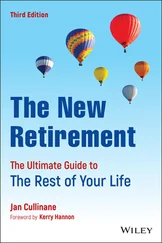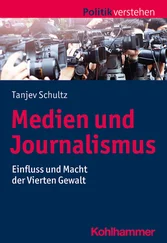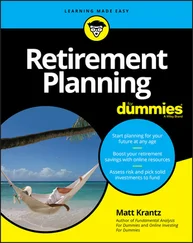With perfectly legal loopholes that enabled companies to tap pension plans like piggy banks, and accounting rules that rewarded employers for cutting benefits, retiree benefits plans soon morphed into profit centers, and populations of retirees essentially became portfolios of assets and debts, which passed from company to company in swirls of mergers, spin-offs, and acquisitions. And with each of these restructuring deals, the subsequent owner aimed to squeeze a profit from the portfolio, always at the expense of the retirees.
The flexibility in the accounting rules, which gave employers enormous latitude to raise or lower their obligations by billions of dollars, also turned retiree plans into handy earnings-management tools.
Unfortunately for employees and retirees, these newfound tricks coincided with the trend of tying executive pay to performance. Thus, deliberately or not, the executives who green-lighted massive retiree cuts were indirectly boosting their own pay.
As their pay grew, managers and officers began diverting growing amounts into deferred-compensation plans, which are unfunded and therefore create a liability. Meanwhile, their supplemental executive pensions, which are based on pay, ballooned along with their compensation. Today, it’s common for a large company to owe its executives several billion dollars in pensions and deferred compensation.
These growing “executive legacy liabilities” are included in the pension obligations employers report to shareholders, and account for many of the “growing pension costs” companies are complaining about. Analysts, shareholders, and others don’t understand that executive obligations are no different from pension obligations for rank-and-file workers and retirees—they are governed by the same accounting rules, and they represent IOUs that a company has on its books. In some ways, executive liabilities are like public pensions: large, growing, and underfunded (or, as in the case of the executives, unfunded).
Unlike regular pensions, the growing executive liabilities are largely hidden, buried within the figures for regular pensions. So even as employers bemoaned their pension burdens, the executive pensions and deferred comp were becoming in some companies a bigger drag on profits.
To offset the impact of their growing executive liabilities on profits, many companies take out billions of dollars of life insurance on their employees, using the policies as informal executive pension funds and collecting death benefits when workers, former employees, and retirees die.
With the help of well-connected Washington lobbyists and leading law firms, over the past two decades employers have steadily used legislation and the courts to undermine protections under federal law, making it almost impossible for employees and retirees to challenge their employers’ maneuvers. With no punitive damages under pension law, employers face little risk when they unilaterally slash benefits, even when promised in writing, since they can pay their lawyers with pension assets and drag out the cases until the retirees give up or die.
As employers curtail traditional pensions, employees are increasingly relying on 401(k) plans, which have already proven to be a failure. Employees save too little, too late, spend the money before retiring, and can see their savings erased when the market nosedives.
But 401(k)s have other features that ensure that the plans, as they exist, will never benefit the majority of employees. The plans are supposed to provide a level playing field, the do-it-yourself retirement vehicle so perfect for an “ownership” society. But the game has been rigged from the beginning. Many companies use these plans as part of a strategy to borrow money cheaply, or in schemes to siphon assets from pension funds.
And just as the new accounting rules led to such mischief, so too did new anti-discrimination rules. Implemented in the 1990s, the rules were intended to ensure that employers didn’t use taxpayer-subsidized 401(k) plans for the favored few, but would make them available to a broad swath of workers. But thanks to the creativity of benefits consultants, employers have used the discrimination rules to shut millions of low-paid employees out of their plans and to provide them with less generous benefits, while enacting other restrictions that make the plans more valuable to managers and executives, at the expense of everyone else.
Today, pension plans are collectively underfunded, hundreds are frozen, and retiree health benefits are an endangered species. And as executive pay and executive pensions spiral, these executive liabilities are slowly replacing pension obligations on many corporate balance sheets.
Meanwhile, the same crowd that created this mess—employers, consultants, and financial firms—are now the primary architects of the “reforms” that will supposedly clean it up. Under the guise of improving retirement security, their “solutions” will enable employers to continue to manipulate retirement plans to generate profit and enrich executives at the expense of employees and retirees. Shareholders pay a price, too.
Their tactics haven’t served as case studies at Harvard Business School, and aren’t mentioned in the copious surveys and studies consultants produce for a gullible public. But the masterminds of this heist should take a bow: They managed to take hundreds of billions of dollars in retirement benefits that were intended for millions of workers and divert them to corporate coffers, shareholders, and their own pockets. And they’re still at it. It might not be possible to resuscitate pension plans, but it isn’t too late to expose the machinations of the retirement industry, which has its tentacles into every type of retirement benefit: profit-sharing plans, 401(k)s, employee stock ownership plans (ESOPs), and plans for public employees, nonprofits, small businesses, and even churches. The retirement industry has exported its tactics, using them to achieve similar outcomes in retirement plans in Canada, Europe, Australia, and elsewhere, and has big plans for Social Security and its overseas equivalents as well. Unless it is reined in, the global retirement industry will continue to capture retirement wealth earned by many to enrich a relative few.
Chapter 1
SIPHON
How Companies Plunder the Pension Piggy Banks
IN NOVEMBER 1999,a group of the nation’s leading pension experts met atat the Labor Department in Washington to discuss a $250 billion problem. After eight years of double-digit returns, the pension plans at American corporations had more than a quarter of a trillion dollars in excess assets. Not a shortage of assets—excess assets. At some companies, the surpluses had reached almost laughable levels: $25 billion at GE, $24 billion at Verizon, $20 billion at AT&T, $7 billion at IBM.
One might expect that such lush asset balances would be something to celebrate.
Pension assets had been building for years, the result of downsizings, a robust stock market, laws enacted in 1974 that required employers to adequately fund pensions, and a 1990 law that made it harder for them to raid the surplus by terminating their pensions.
Thanks to this, many employers hadn’t contributed a cent to their plans since the 1980s, yet they still had enough money to cover the pensions of all current and future retirees even if they lived to be one hundred. With so much money, the plans would cost the companies nothing for years to come.
But employers weren’t celebrating. The money was burning a hole in their pockets. In theory, surplus pension assets are supposed to remain in the pension plans, to provide cushion for the inevitable times when investment returns are weak and interest rates fall. But employers felt that requiring companies to use pension money only to pay pensions made no sense.
Читать дальше












